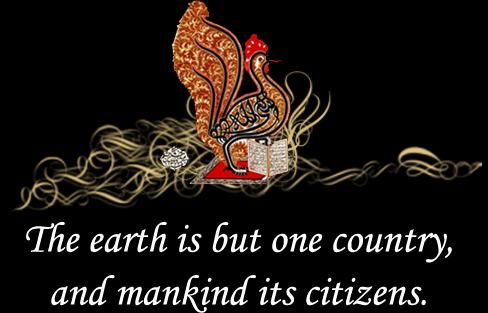How the West Found Out about Tahirih

After the Babi poetess and women’s rights advocate Tahirih’s execution, her name and her fame travelled westward almost immediately.
Sir Justin Sheil, a British general and diplomat who served as Queen Victoria’s representative to the court of the King of Persia, sent the first known mention of the execution of Tahirih in this dispatch dated August 22nd, 1852:
Among those who have suffered death was a young woman, the daughter of a Teacher of the Law in Mazanderan of great celebrity who has been three years in confinement in Tehran. She was venerated as a prophetess by the Babees [Babis], and her designation among them was ‘Koorat ool ain’ – ‘Pupil of the eye.’ [Actually Qurrat’ul-Ayn, “Solace of the Eyes”] She has been strangled by the Shah’s order. The Sedr Azim has opposed some of these acts, but the Shah’s anger and vindictiveness have not allowed him to pay attention to advice. – Moojan Momen, The Babi and Baha’i Religions, 1844-1944, Some Contemporary Western Accounts, p. 135.
The next day, Prince Dolgorukov, the Russian ambassador to Persia, sent this dispatch:
… For a long time there has been imprisoned in Tihran under the surveillance of Mahmud Khan, Chief of Police, a Babi woman (Tahirih). In spite of this she apparently found means daily to gather around herself many members of her sect. She was strangled in a garden in the presence of Ajudan-Bashi…. – Ibid., p. 143.
Soon Tahirih’s execution was the subject of a newspaper article in the October 13th, 1852, edition of the Times of London titled “How They Punish Treason in Persia.”
In 1852, the Babi Faith was little known in the West; and the Baha’i Faith—its successor and fulfillment—had not yet begun. Baha’u’llah, the prophet and founder of the Baha’i Faith, was one of the leading Babis at the time, and was imprisoned in Tehran’s Black Pit for his beliefs.
The Times of London newspaper article included many of the details Abdu’l-Baha—the son of Baha’u’llah and the leader of the Baha’i Faith after his passing—later reported in his book Memorials of the Faithful. In that book Abdu’l-Baha memorialized Tahirih and described the moment of her martyrdom:
They brought her into a garden, where the headsmen waited … forced a scarf between her lips and rammed it down her throat. Then they lifted up her unsullied body and flung it in a well, there in the garden, and over it threw down earth and stones. But Tahirih rejoiced; she had heard with a light heart the tidings of her martyrdom; she set her eyes on the supernal Kingdom and offered up her life. – Abdu’l-Baha, Memorials of the Faithful, p. 203.
The first book to include a mention of Tahirih was Lady Mary Sheil’s “Glimpses of Life and Manners in Persia,” published in 1856:
There was still another victim. This was a young woman, the daughter of a moolla in Mazenderan, who, as well as her father, had adopted the tenets of the Bab. The Babees venerated her as a prophetess; and she was styled Khooret-ool-eyn, which Arabic words are said to mean, Pupil of the eye. After the Babee insurrection had been subdued in the above province, she was brought to Tehran and imprisoned, but was well treated. When these executions took place she was strangled. This was a cruel and useless deed. – Lady Mary Sheil, Glimpses of life and manners in Persia, quoted in Farzaneh Milani’s Veils and Words, The Emerging Voices of Iranian Women Writers, p. 97.
The British diplomat Robert Grant Watson wrote a history of Persia covering the first half of the 19th century, called A History of Persia, which was published in 1866. In his book, Watson made a brief mention of Tahirih, “…the daughter of a celebrated teacher of the law, and who was considered by the Babis to be a prophetess….” – p. 409.
The first book about the history of the Bab and his followers in a Western language was The Báb and the Bábis: Religious and Political Unrest in Persia in 1848-1852, written in Russian by Aleksandr Kazem-Bek, and published in 1865. Kazem-Bek was a philologist who straddled the Russian and Persian worlds; he was born in Persia, died in St. Petersburg and was of Azerbaijani origin.
In 1865, an Austrian doctor, Dr Jakob Polak, claimed to have been present at Tahirih’s execution—a claim which has never been verified:
I was witness to the execution of Qurret el ayn, who was executed by the war minister and his adjutants; the beautiful woman endured her slow death with superhuman strength. – quoted by Moojan Momen in The Babi and Baha’i Religions, 1844-1944, Some Contemporary Western Accounts, pp. 26-27.
This series of essays is excerpted from Hussein Ahdieh’s and Hillary Chapman’s The Calling, available here:https://www.bahaibookstore.com/The-Calling-P8882.aspx

